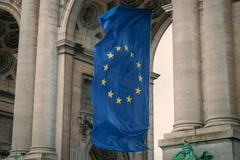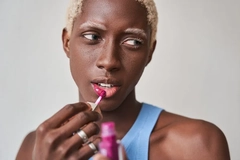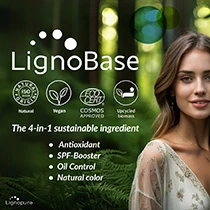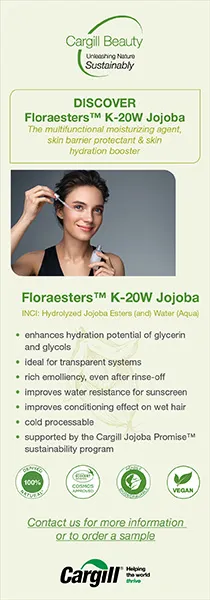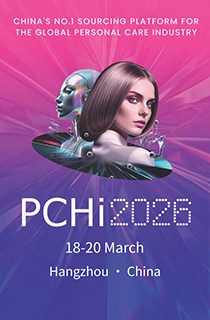South Korea diversifies and sees record trade surplus thanks to global demand for K-beauty

23 Jul 2024 --- The Korean Wave (Hallyu) and K-beauty help South Korea’s cosmetics exports hit an all-time high of US$4.82 billion in the first half of the year, marking an 18.1% increase compared to the same period last year.
Major beauty businesses from the nation are showing an increased interest in global markets to diversify beyond China, while international markets crave more cosmetics from South Korea. The Korea Customs Service says the latest figures surpass the previous record of US$4.63 billion set in the first half of 2021.
BusinessKorea reports that the demand for Korean skin care products, such as lotions and creams and color cosmetics, including lipsticks and nail polishes, increased due to the growing influence of Korean media on a global scale.
Export diversification
The Korea Customs Service says in the first half of 2024, cosmetics imports to South Korea totaled US$850 million, resulting in a record trade surplus of US$3.97 billion.
 Innisfree rebrand targets trending eco-friendly practices in skin care and packaging.Exports to China dropped 14.1% but it is still the largest importer of Korean cosmetics at US$1.21 billion. Meanwhile, exports to the US surged by 61.1% to US$870 million and exports to Japan increased by 21.5% to US$480 million.
Innisfree rebrand targets trending eco-friendly practices in skin care and packaging.Exports to China dropped 14.1% but it is still the largest importer of Korean cosmetics at US$1.21 billion. Meanwhile, exports to the US surged by 61.1% to US$870 million and exports to Japan increased by 21.5% to US$480 million.
Part of the change in export dynamics can be attributed to China’s economic downturns, which forced South Korean businesses to broaden their customer bases, reports BusinessKorea. Markets in Southeast Asia, Europe and North America are becoming important.
The Korea Customs Service predicts this year’s annual export volume could exceed US$10 billion for the first time if second-half exports follow last year’s trend.
France was the top country for cosmetics imports to South Korea in the first half of this year, amounting to US$250 million. Other significant import figures include US$160 million from the US, US$80 million from Japan and US$50 million from China.
Booming K-beauty business
According to research released by TikTok, global spending on Korean cultural products is expected to nearly double to US$143 billion by 2030.
To meet international demand and reduce production costs, Korean cosmetics companies such as Amorepacific, LG Household & Health Care, Korea Kolmar and Cosmax established manufacturing facilities in key markets. The facilities are located in the US, China, Japan, Indonesia and Thailand.
 Kolmar Korea partnered with Amazon.Recently, Kolmar Korea appointed global experts to accelerate its US presence with plans to build its second US plant early next year. To further enhance its market penetration, it has also created a strategic framework that unifies sales, production and R&D with aims to achieve US$100 million in sales over the next five years.
Kolmar Korea partnered with Amazon.Recently, Kolmar Korea appointed global experts to accelerate its US presence with plans to build its second US plant early next year. To further enhance its market penetration, it has also created a strategic framework that unifies sales, production and R&D with aims to achieve US$100 million in sales over the next five years.
The company says the rising popularity of K-beauty in the US market through channels like Amazon will help promote sales for small and medium-sized Korean indie brands seeking entry into the US market. The company recently partnered with Amazon to capitalize on the K-beauty demand.
A representative of Kolmar Korea says the appointment “underscores our commitment to gaining new momentum in the North American market by placing industry experts at the forefront. Kolmar Korea will focus on fostering growth through the synergistic collaboration of sales, production and R&D and expanding its influence beyond North America to Europe.”
Earlier this month, Cosmax Group unveiled a new corporate identity as a global beauty and health service company that goes beyond K-beauty. The previous tagline, “The Science of K-Beauty,” was changed to “The Science of Beauty.”
Meanwhile, BusinessKorea notes that since LG Household & Health Care and Amorepacific have been more reliant on the Chinese market since the first quarter of the year, their performance declined due to 2017 Chinese measures for preference for domestic brands.
In regions outside of China, Amorepacific has concentrated on growing channel touchpoints and fortifying its line of major brand products from Sulwhasoo, Laneige and Innisfree. LG Household & Health Care is also improving efficiency in the US as part of its non-China business strategy with its subsidiary Avon, shares BusinessKorea.
Personal Care Insights recently spoke with Kao about why consumers look to Japan and South Korea. “Even in cosmopolitan cities like Shanghai, consumers are more likely to look to Japan and South Korea for beauty inspiration than France or the US,” said Yayoi Inoue, director at the Kao Beauty Research & Creation Center.
“In recent years, K-beauty has also gained interest in Japan, especially among Generation Z, mainly due to the influence of K-pop and Korean dramas.”
By Venya Patel

